Greenland - Kalaallit Nunaat (Land of the Kalaallit)
5 Kroner
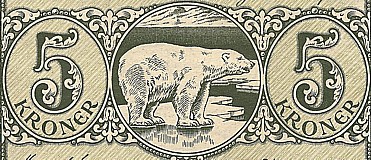
Greenland is big. At just under three times the size of Texas, it is the world’s largest non-continental island. It’s shape is often misrepresented by most depictions on maps due to the spreading out of the longitudinal lines, but looking at the globe, you can see that it is indeed a large island that sits atop Canada’s North, north-east.

Greenland appears to be larger than most other landmasses in the familiar, yet distored view of the Mercator projection. Gerardus Mercator developed this in 1569 primarily as an aid to ocean navigation. Remember though that the world is actually a sphere, and that the vertical lines of lattitude would converge together at the poles. Here, they are all equdistant, greatly distorting the landmasses at the top and bottom of the map. Greenland, which would normally fit about 14 times into the African continent is shown at 550% larger than it’s actual size.
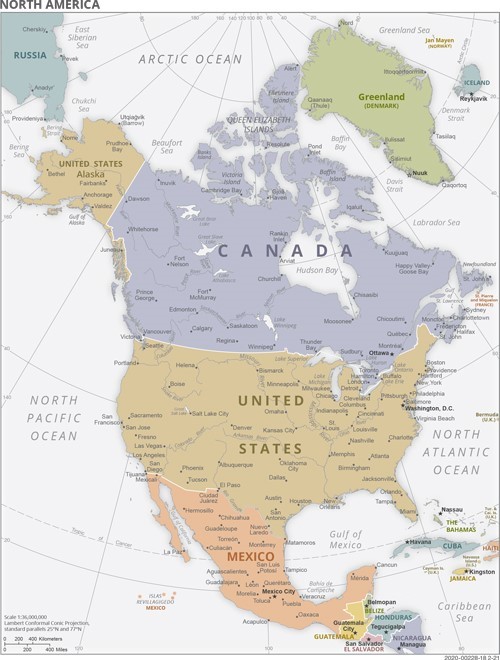
Here, Greenland is represented in a much more accurate depiction with what it likely the Peirce Quincuncial projection, which was introduced by Charles Sanders Peirce in 1879.
While Greenland was inhabited long before European settlers arrived, it was Erik Thorvaldsen (Erik the Red) who gave the island its name in in A.D. 98. He had been banished from Iceland and thought that the name would help in his attempt to lure settler there.
Today, Greenland is populated mainly by indigenous peoples with the Danish with some other nationalities making a small percentage. It is a member of the Overseas Countries and Territories Association of the European Union, and is a self ruling government under the Danish Government. Greenland has enjoyed Self-Rule since 1979, but Denmark still has control over several areas, including the military, foreign affairs and the financial policy of the Island.
Most of the population is located along the southwest coast with approximately one-third living in the capital, Nuuk.
There is a Greenlandic language, and in 2009 it was declared to be Greenland’s only official language. However, Danish is still widely used today, and most people speak both, especially in the larger cities.
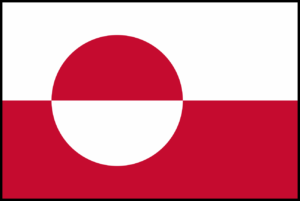
The flag of Greenland borrows the colors from the Danish flag, red and white. It has one band of white atop a band of red, but an off center circle inverts these colors. The design is said to represent the sun reflecting off an ice field.
This is where you place the text for the new article. Be sure to double check formatting pasting the new text in here. There may be a need to change the font size and to make changed in the paragraph spacing, etc. Also double check to endure that the Justified paragraph is in full and not only in the Left Justified. This may not be possible, but it’s worth a try.
For such a small population, it is surprising that Greenland had paper currency issued as far back as 1874.In 1913 the Styrelse af Kolonierne I Grønland (Management of the Colonies in Greenland) issued a series of notes that depict the more familiar Polar Bear. It was in 1926 that the style was developed almost identically to this note by the Grønlands Styrelse (Board of Governors of Greenland) which was printed in the top and bottom boarders on the front and on the back-center ‘GS’ was displayed prominently while ‘Grønlands Styrelse’ encircled the letters.
The last issue of Greenland notes was from 1953 until 1967 when ‘Den Kongelige Grønlandske Handel’ replaced the ‘Grønlands Styrelse’ on the banknote and the back-center had the outline of Greenland. Notes issued in 1953 were the 5 Kroner with this polar bear, 10 Kroner with a spouting whale and 50 Kroner with an old wooden ship. A Credit note of completely different design was issued showing a portrait of Knud Rasmussen, a polar explorer, and Thule Rock.
Here is a banknote from Greenland issued in 1953 by the Royal Greenland Trading Department (Den Kongelige Grønlandske Handel) and signed by both Hans C. Christiansen on the left and Børge Ibsen on the right.
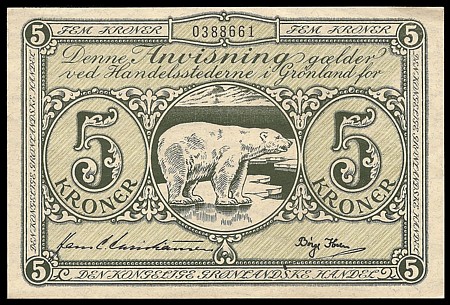
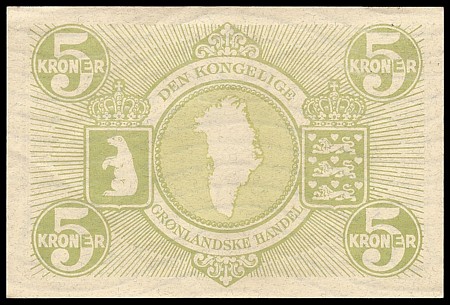
This note has Danish text at the top: Denne ANVISNING gælder ved Handelsstederne i Grønland for 5 Kroner which translates as: This instruction applies at the trading sites in Greenland for 5 Crowns.
Den Kongelige Grønlandske Handel was an old Danish sponsored company that was given authority to administer Greenland’s affairs, and was even at a time equipped with its own navy. This company was the de-facto government for Greenland from 1774 until 1908.
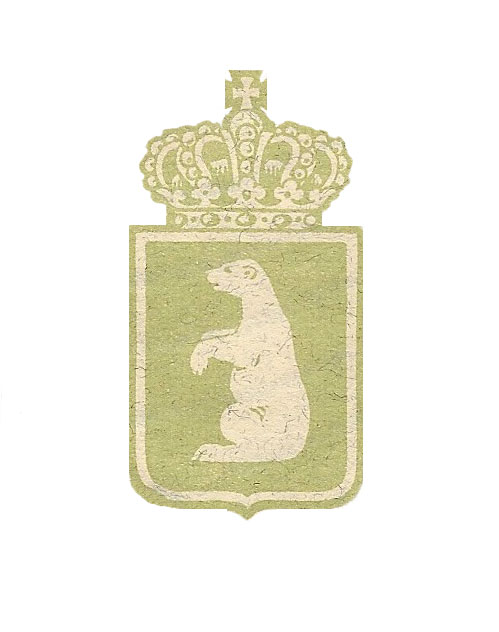
The back of this note shows the coat of arms of Greenland on the left side, which is a polar bear. This symbol was first introduced in the coat of arms of Denmark in 1666, differing from the Danish version in that the polar bear on the Greenlandic coat of arms raises the left forepaw instead of the right. This difference reflects the Inuit belief that polar bears are left-handed. On the right side is the coat of arms of Denmark, topped by the king’s crown.
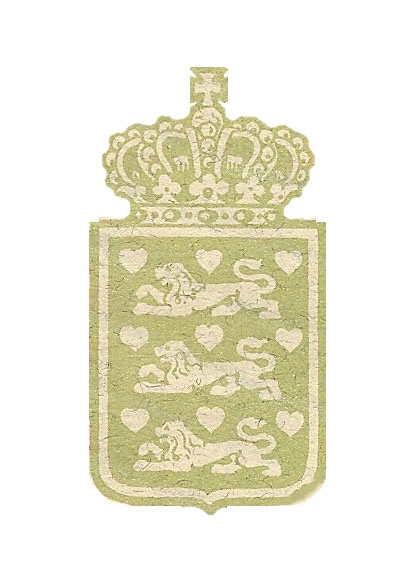
Greenland now uses Denmark banknotes as its currency. There was a proposal for Greenland to resume their own banknote production and use in the early 200’s, but in 2009 it was decided to abandon the project as it would create more difficulties than their use of the Danish currency.